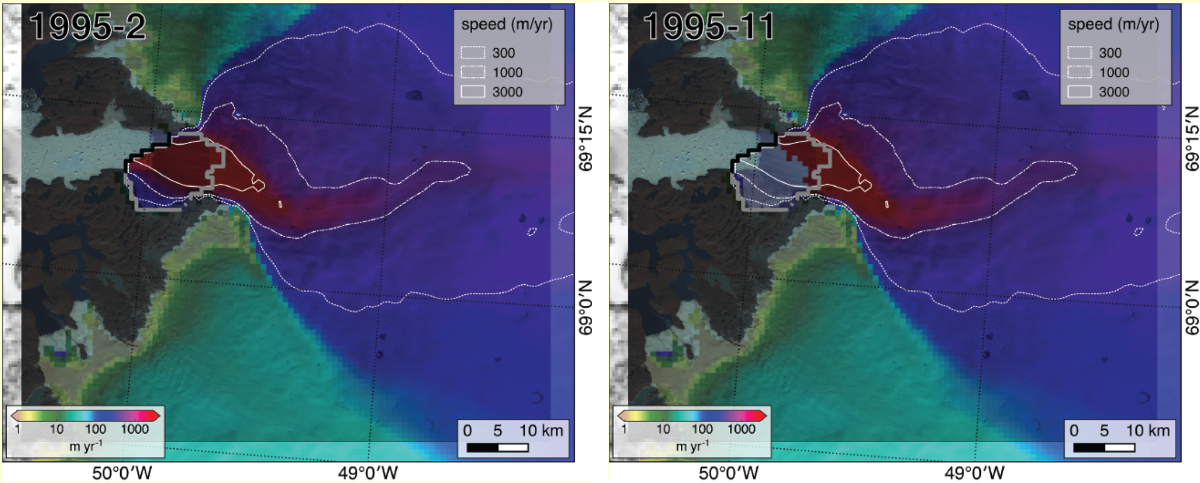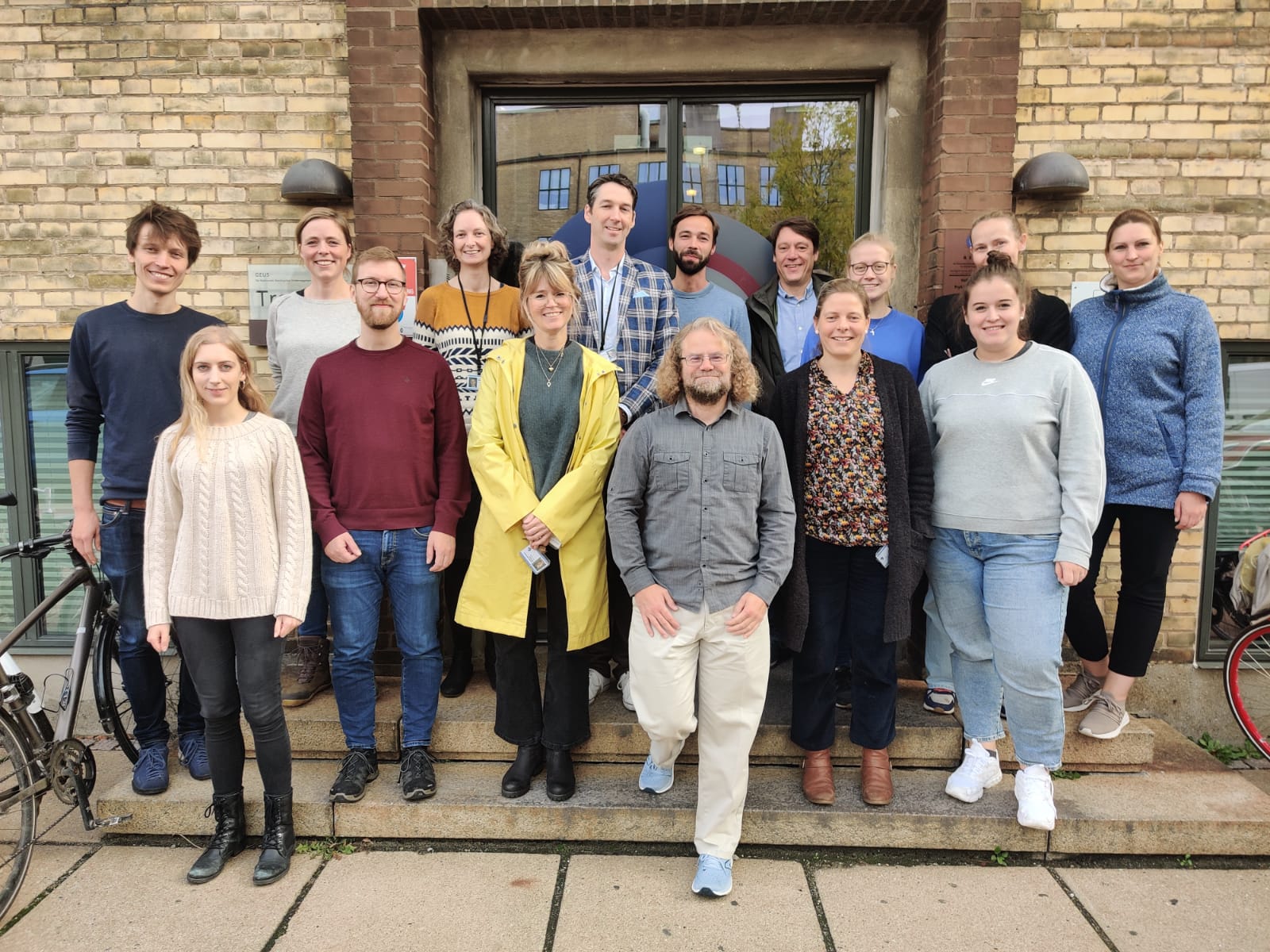Published: Jan 1, 2016 by The PISM Authors

Simulated ice extent and velocity in April (left) and November (right) of 1995.
| Title | The Autumn of break-ups: When Jakobshavn Isbrae lost its floating tongue |
| Authors | A. Aschwanden, M. Fahnestock, M. Truffer, and R. Motyka |
| Venue | 2015 AGU Fall Meeting |
Jakobshavn Isbrae, Greenland’s fastest-flowing outlet glacier, lost its floating tongue in 1995, an event which is often attributed to changes in ocean temperature. This poster and movie show the results of PISM simulations of this event, based on a step increase from 180 m/yr to 225 m/yr in sub-shelf melt rate during 1995 (Motyka et al. 2011). The simulations are started from reasonably-detailed observations of the 1985 state of the outlet glacier. A high-resolution HIRHAM5 reanalysis (Langen et al. 2015) is used for the atmospheric 1989–2011 climate. The results show that general patterns are simulated correctly, with ice speeds which almost double after break-up of the floating tongue. The timing of the break-up is too early and too fast, but these simulations do not include the “ice rumple” (Echelmeyer et al. 1991), which may add stability to the floating tongue.
